An ergonomic kitchen workstation is essential for improving comfort, efficiency, and overall well-being. Whether in a home kitchen or a professional culinary space, well-designed ergonomic workstations reduce strain, enhance productivity, and create a seamless cooking experience. From adjustable countertops to strategically placed appliances, these innovations help optimize movement and reduce fatigue.
The Importance of Ergonomic Design in Kitchens
Traditional kitchen layouts often fail to consider the physical strain of repetitive cooking tasks. Poorly designed workstations can lead to back pain, joint discomfort, and inefficiency. Ergonomic workspaces prioritize proper posture, minimize unnecessary movement, and improve accessibility.
Key Elements of an Ergonomic Kitchen Workstation
- Adjustable Countertop Heights
- Allows customization based on user height and needs.
- Reduces strain on the back and wrists during food preparation.
- Ideal for multi-user kitchens with varying ergonomic requirements.
- Optimized Work Triangle Design
- Ensures efficient movement between sink, stove, and refrigerator.
- Reduces unnecessary steps and improves workflow.
- Enhances overall kitchen functionality.
- Ergonomic Flooring Solutions
- Anti-fatigue mats provide support and reduce foot discomfort.
- Slip-resistant surfaces enhance safety and prevent accidents.
- Cushioned flooring minimizes joint strain for prolonged standing.
- Smart Storage Solutions
- Pull-out shelves and soft-close drawers reduce bending and reaching.
- Vertical storage optimizes space and keeps essentials within reach.
- Lazy Susans and corner cabinets improve accessibility.
- Hands-Free and Touchless Appliances
- Motion-activated faucets minimize hand strain and improve hygiene.
- Voice-controlled ovens and smart cooktops reduce manual effort.
- Automated trash bins enhance convenience and cleanliness.
- Proper Lighting for Reduced Eye Strain
- Under-cabinet LED lighting enhances visibility while preparing meals.
- Adjustable task lighting reduces glare and shadows.
- Smart lighting systems adapt brightness based on kitchen activity.
- Ergonomic Seating and Work Surfaces
- Adjustable stools and cushioned seating for comfortable meal prep.
- Multi-level workstations accommodate various kitchen tasks.
- Fold-down work surfaces for compact kitchens.
- Smart Ventilation Systems
- Automatic range hoods maintain air quality without manual adjustments.
- Sensor-based ventilation optimizes airflow and reduces cooking odors.
- Energy-efficient models enhance kitchen sustainability.
Benefits of Ergonomic Kitchen Workstations
- Reduced Physical Strain – Minimizes back, neck, and wrist discomfort.
- Enhanced Productivity – Streamlined workflow increases efficiency.
- Improved Safety – Reduces risks of slips, falls, and repetitive strain injuries.
- Better Accessibility – Accommodates all users, including those with mobility challenges.
- Greater Energy Efficiency – Smart storage and lighting solutions optimize energy use.
Future Trends in Ergonomic Kitchen Design
- AI-Driven Kitchen Layout Optimization: Smart sensors analyze movement patterns to suggest layout improvements.
- Adaptive Workstations: Adjustable counters and cabinets that change height based on user preference.
- Robotic Assistants: AI-powered kitchen assistants to aid with repetitive tasks.
- Sustainable Ergonomic Materials: Eco-friendly countertops and flooring designed for comfort and durability.
- Biometric-Activated Appliances: Custom settings based on user posture and preferences.
Conclusion
Ergonomic workstations are revolutionizing kitchen design by prioritizing comfort, efficiency, and safety. By integrating adjustable features, smart storage, and user-friendly technology, modern kitchens can enhance productivity while minimizing strain. As innovation continues, future kitchens will become even more adaptive, ensuring a seamless and health-conscious cooking experience.
